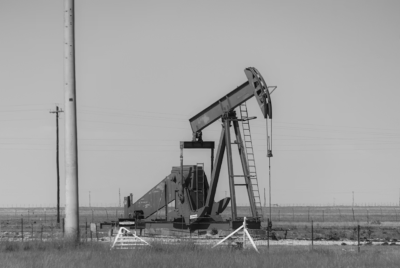Cooling US Inflation Raises Hopes Of An End To Rate Hikes
US consumer inflation cooled more than expected last month, according to government data published Tuesday, providing welcome news for policymakers looking to control price increases without damaging the economy.

US consumer inflation cooled more than expected last month, according to government data published Tuesday, providing welcome news for policymakers looking to control price increases without damaging the economy.
The consumer price index (CPI) inflation gauge increased by 3.2 percent in the 12 months to October, down from 3.7 percent a month earlier, the Labor Department said.
Inflation was unchanged month-over-month from September, with a sharp monthly decline noted in energy prices.
Both the annual and monthly figures came in below the median expectations of economists surveyed by MarketWatch.
"Today we saw more progress bringing down inflation while maintaining one of the strongest job markets in history," President Joe Biden said in a statement.
"I'm working to get results for the American people and it's happening."
US stock markets rose sharply on the news of cooling inflation, which reduces the likelihood of another interest rate hike next month.
"I think it's very encouraging," Nationwide economist Kathy Bostjancic told AFP.
"This reading helps ease some of the pressure on policymakers to raise rates further."
Although easing inflation is good news for consumers, the current rate of inflation as measured by a range of gauges remains stuck firmly above the Fed's long-term target of two percent.
The Federal Reserve recently held its key lending rate at a 22-year high for a second consecutive meeting, leading some analysts and traders to predict it was done tightening monetary policy.
But since then, a number of policymakers, including Fed Chair Jerome Powell, have indicated that they are prepared to hike rates again, if necessary, to bring price increases firmly down to target.
Some officials, including Chicago Fed President Austan Goolsbee, have expressed a different view, indicating the United States may be on track to bring down inflation while avoiding a damaging recession -- known as a "soft landing."
On Tuesday, Goolsbee told a conference in Detroit that the US could be on track to "surpass" its 1982 record, when policymakers managed to slow CPI inflation by more than four percent.
But unlike in 1982, when the Fed's actions caused a surge in joblessness, policymakers in 2023 may be able to do so while keeping the unemployment rate below four percent, he said.
"That's what I call the golden path," he added. "That's more than a soft landing. That's the softest of all the soft landings."
While the decline in the gasoline index was responsible for the slowdown in prices, it was partially offset by an increase in the index for shelter, the Labor Department said.
Transportation services also acted as a counterweight to falling energy prices.
Stripping out volatile food and energy segments, so-called "core inflation" cooled to 4.0 percent last month, the smallest 12-month change since the period ending September 2021, the Labor Department said.
Core inflation is closely watched by analysts and traders, since it paints a clearer picture of how some of the underlying factors in the economy are doing.
"When you look in the details there, it's really transportation services that are exerting the most upward pressure on core services," said Bostjancic from Nationwide.
On a monthly basis, core CPI inflation increased by 0.2 percent, down from 0.3 percent a month earlier.
The figures for core inflation also came in below expectations.
"It was a move very much in the right direction," OANDA's senior market analyst, Craig Erlam, told AFP, adding that "the Fed will be pleasantly surprised" by the move.
The cooler inflation figures raise the chances of the Fed holding interest rates for a third consecutive meeting in December.
"What we're seeing is continued disinflation at the core level, albeit gradually," said Bostjancic.
She added that the October CPI figure "definitely reduces any pressure for the Fed to act."
"Our view is, they're done tightening for this business cycle, but they're going to be very slow and gradual at cutting rates," she said.
Futures traders currently assign a probability of almost 95 percent that the Fed will pause once more at its next rate decision in December, according to data from CME Group.
Over the next few months, economists at Goldman Sachs expect core CPI to remain around 0.3 percent, according to a recent investor note.

© Copyright AFP 2025. All rights reserved.

















